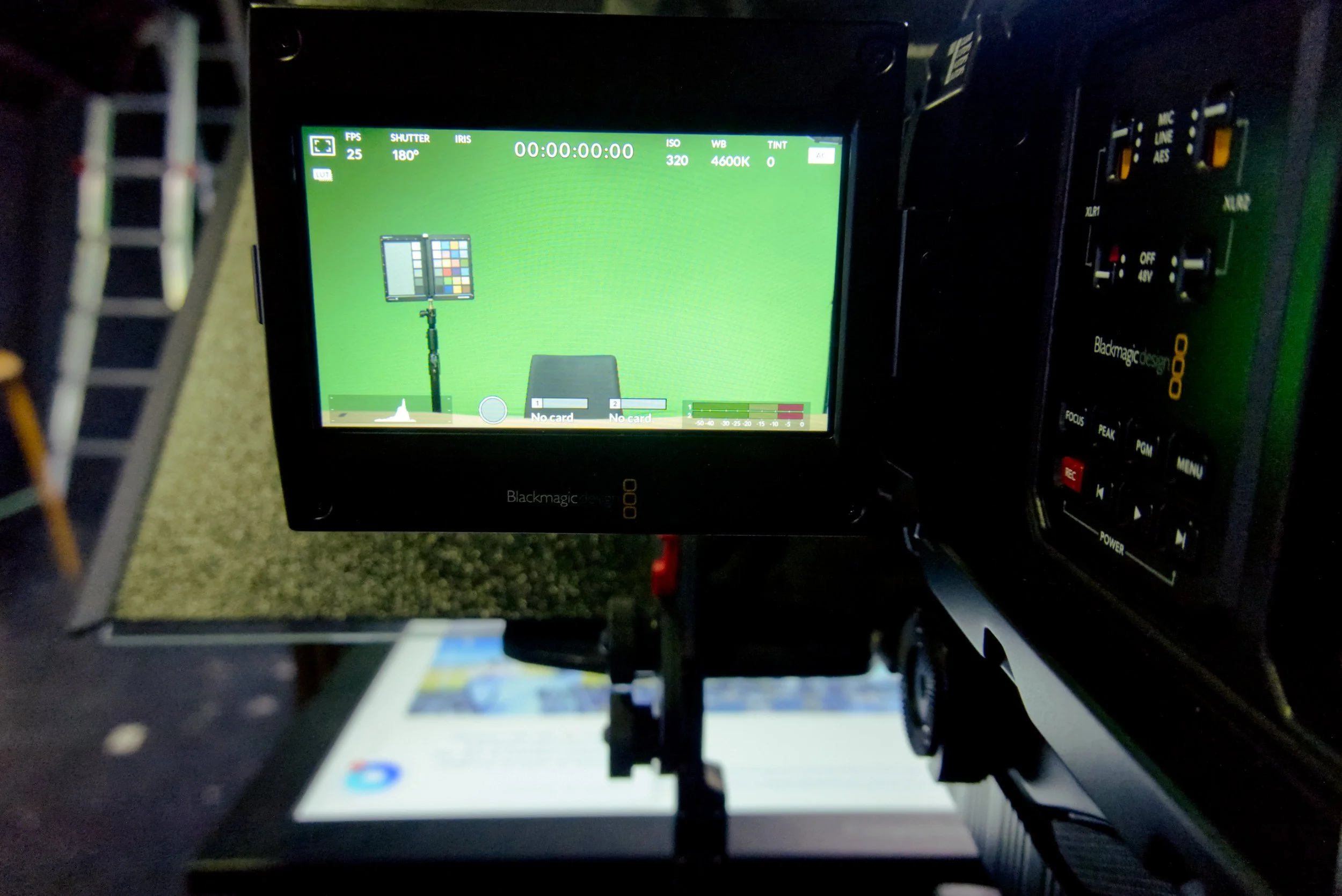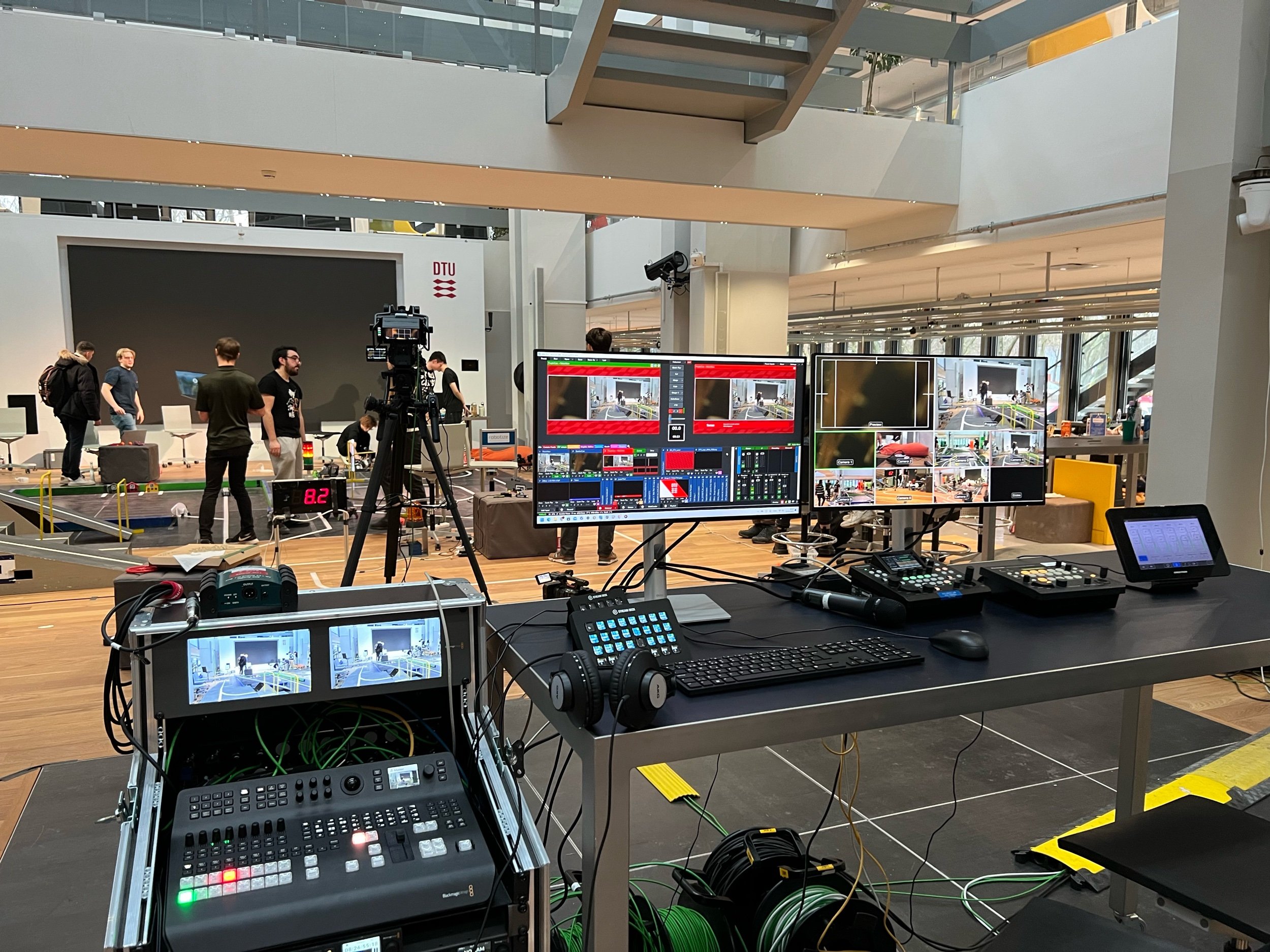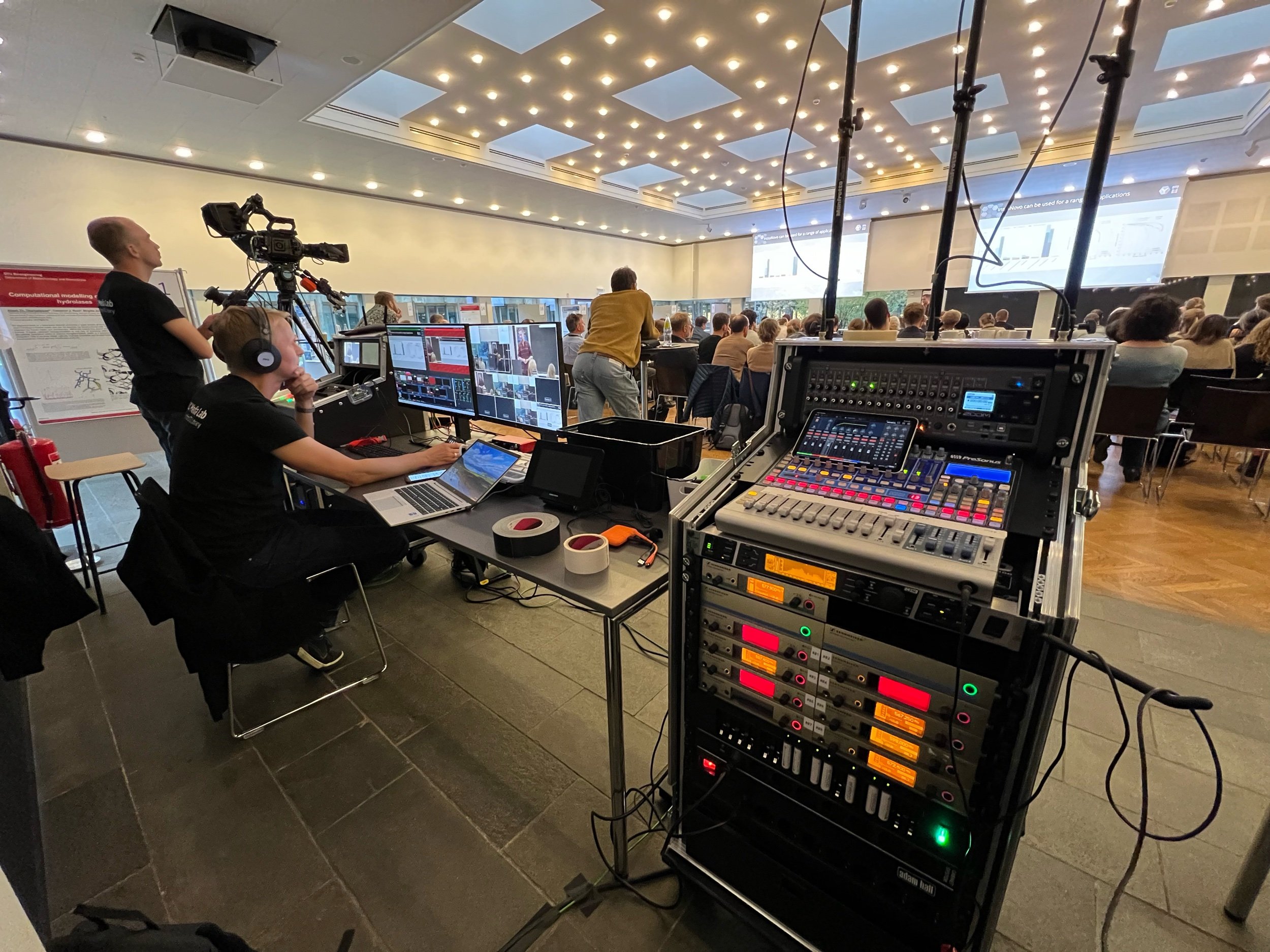Video Systems and Installations
DTU’s video studio
In its ambition to deliver higher quality educational content, DTU has invested in a newer, better-equipped video studio. The studio was renovated at the beginning of 2024 and features a dedicated control room area, improved signal routing, higher quality cameras, and uniform lighting for better chroma keying (green screen). We implemented a design that primarily uses Blackmagic Design equipment as the main routing and switching devices, cameras, recorders, and a chroma keying processor.
The lighting solution is a blend of the original Diva lights, which use analog control, and the new Aputure DMX-controlled panels. When designing the studio, the team envisioned two main scenarios:
The primary scenario uses a green screen as a background, possibly with a desk and a virtual presentation.
The secondary scenario adopts a more traditional presentation style, where the presenter stands beside a TV screen or in front of a colored backdrop. There are a few different colored motorized backdrops available.
The “brain” of the studio is a powerful PC used for live streaming with vMix, virtual background design with Unity, and control of the equipment using two Elgato Stream Decks. Additionally, the studio features spatial trackers for real-time 3D tracking, enabling high precision for virtual video production.
Read more: link.

































DTU’s Walk-In studio
The walk-in studio at DTU serves the purpose of providing a professional video service for educators and students to record high-quality, streamlined presentations. Since its inception in 2014, it has gone through three major iterations. We have designed the studio utilizing Blackmagic Design equipment for the video component and an intelligent directional ceiling microphone from Sennheiser. The system boots up automatically when the PIR sensors detect motion in the room.
The low-level control is delegated to a single Arduino-based board (EtherMega from Freetronics), while the user interface employs an Elgato Streamdeck controller with the Companion app running on a Raspberry Pi 5. Communication between the Arduino and the Raspberry Pi utilizes an Ethernet connection. The same communication channel is used for the ATEM switcher. The lighting is controlled via DMX.
The Arduino board features a DMX shield, an RS-232 port used to turn the TV screen on and off, and an 8-relay board for powering the system and enabling adjustments to the height of the camera and the TV screen. Both are mounted on motorized IKEA table legs. The system includes a voice assistant that provides guidance to the user. The current iteration of DTU’s walk-in studio was developed in the spring/summer of 2024.
Read more: link.
























Small and big mobile audio and video racks
Live-streaming of events requires portable equipment that can accommodate different scenarios and setups. That is where portable racks with all necessary equipment already connected and configured is essential. Depending on the type of event, DTU relies on different sets - from small racks and PTZ cameras, to big racks with man-operated cameras, lighting, dedicated audio mixer and video graphics. The design of the racks allows for quick setup and streamlined production. The built-in utility drawers hold diverse cables and devices allowing flexibility in any situation.





SAP hybrid meeting auditorium
The video studio at SAP was built in the experience center where the company was holding presentations. The space was doubled-down as a live-production / hybrid meeting facility. While the AV-installation company (AV Center) and the video-streaming solution company (Video people) have delivered their working solutions, there wasn’t a real integration between the two. That is where the upgrade of both the video rack and the AV system allowed for a more cohesive integration and streamlined production. Interconnecting audio and video sources between the two systems allowed much flexibility in the live-streaming video production studio.









